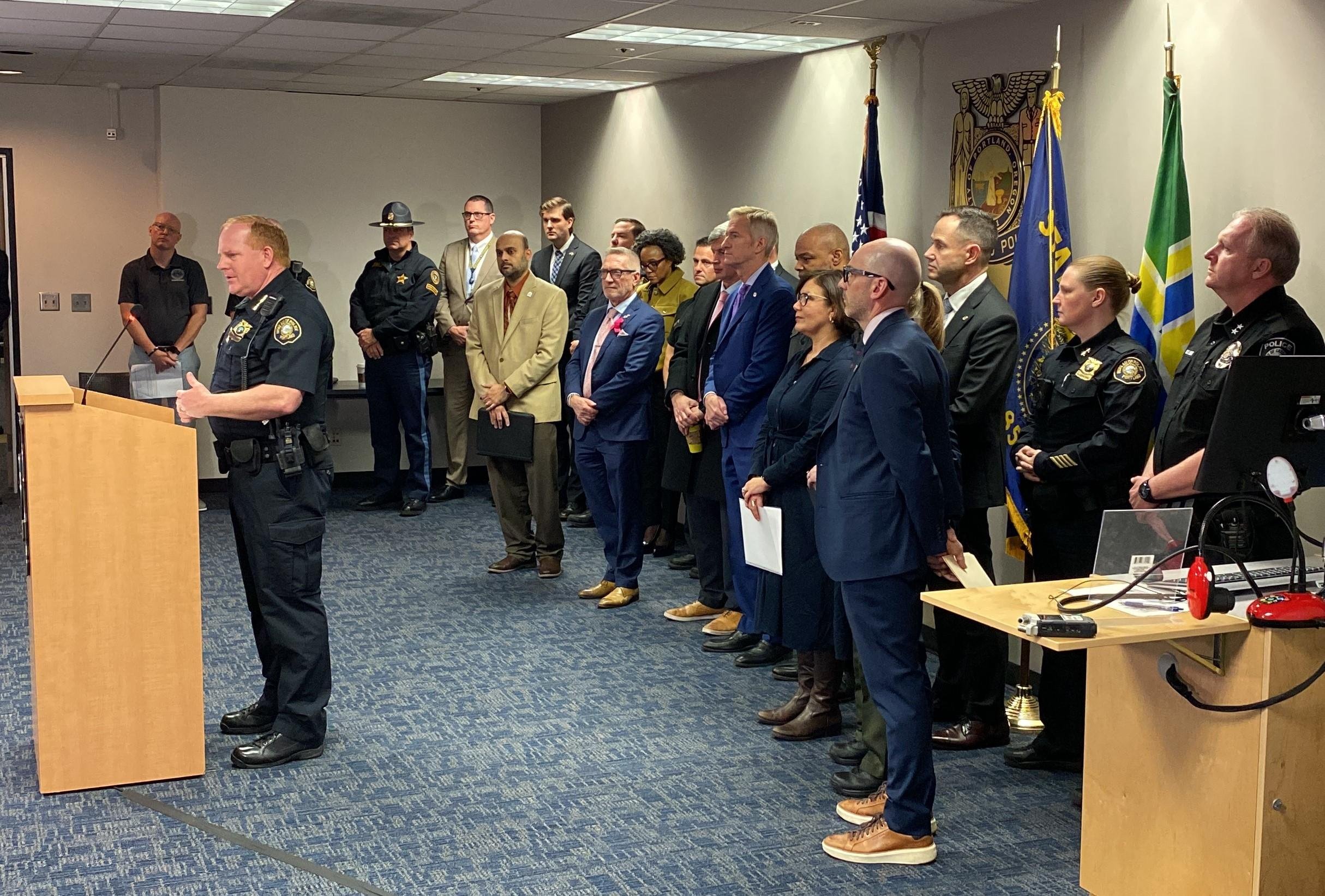Business Preparedness Resources
Emergency resources for the City of Portland & Multnomah County
Prepare Your Business
Election-Related Demonstrations
In advance of the November 5th elections, the City of Portland issued a Statement and held a Press Conference.
Tips to Stay Informed & Increase Safety:
Sign up to get email and text alerts about potential protests and unlawful assembly happening near your building(s) so that you can plan ahead.
Follow the social media accounts listed on the right side of this page.
Secure items around your building. Arrange for garbage pickup (if possible) and secure dumpsters. Bring A-board signs in from the sidewalk and street. Remove or secure all patio seating, tables, potted plants, etc.
Ensure external video cameras are working properly and turned on so that footage can be shared with law enforcement if needed.
Help send a community-wide message about our shared value of peaceful gathering and free speech. Violence and destruction are not acceptable in our community.
Follow the general business preparedness advice below.
Refer to the Respond & Recover page if your business is impacted by an event.
Step 1: Understand & Reduce Risks
First, learn about local hazards. Next, complete a Preparedness Checklist to identify and prioritize your organization's weak spots. Finally, take action to reduce your risk. Consider purchasing business interruption insurance, earthquake insurance, and flood insurance.
Step 2: Make Plans
Make a plan for your employees, computers and data, facilities, and inventory. Start with a simple plan, and then develop it over time. To get started, use these 7 Steps to a Disaster Resilient Workplace and check out the Red Cross's Ready Rating Program.
Use the resources below to guide your planning. Backup your plans in case you lose internet or phone service. Have paper copies of critical information, such as employee contact information, insurance information, your emergency plan, and contact information for critical clients, suppliers, or service companies.
Portland Police Bureau:
Twitter: @PPBAlerts (special event messaging)
Twitter: @PortlandPolice
Facebook: Portland Police
Instagram: @PortlandPolice
City of Portland:
Twitter: @PortlandGov
Facebook: PortlandORGov
Instagram: @PortlandGov
Step 2: Make Plans
Make a plan for your employees, computers and data, facilities, and inventory. Start with a simple plan, and then develop it over time. To get started, use these 7 Steps to a Disaster Resilient Workplace and check out the Red Cross's Ready Rating Program.
Use the resources below to guide your planning. Backup your plans in case you lose internet or phone service. Have paper copies of critical information, such as employee contact information, insurance information, your emergency plan, and contact information for critical clients, suppliers, or service companies.
General Business Preparedness:
Ready Business Toolkit (FEMA)
Disaster Resilience & Recovery (US Chamber of Commerce Foundation)
Business Planning Guide (Small Business Association)
Nonprofits & Other Community Organizations:
Oregon Nonprofit Disaster Preparedness (Non-Profit Association of Oregon)
Emergency Preparedness Toolkit for Community-Based Organizations (MMRS)
Emergency Preparedness for Community Healthcare Providers (AHCA/NCAL)
Developing Emergency Operations Plans for Houses of Worship (FEMA)
Childcare Center Crisis/Disaster Response Handbook (Multnomah County)
Earthquake Preparedness: What Every Childcare Provider Should Know (FEMA)
Disaster-Specific Resources:
Strengthen Your Cybersecurity (Small Business Association)
Cyber Planner (FCC)
Cybersecurity Awareness Program Small Business Resources (CISA)
Fire Prevention Tips for Small Businesses (City of Portland)
Secure Your Space (EarthquakeCountry.org)
Step 3: Train & Prepare
Your emergency plans are only useful if everyone on your team understands them. Talk with employees, suppliers, customers, accountants, attorneys, and anyone else who will be impacted and play a role in response and recovery. Ensure they understand the plans and their role. Make sure they are personally prepared so they can participate in getting back to business. Make personal preparedness a value of your organization, and make that value known internally and externally.
Ways to Prepare Customers and Staff:
Survey everyone to gauge their level of preparedness.
Offer programs and events that promote individual preparedness.
Participate in the Great ShakeOut on the 3rd Thursday of October.
Incorporate preparedness messages into staff meetings and newsletters on an ongoing basis.
Provide emergency preparedness supplies or equipment instead of other items for gifts, bonuses, or prizes. The Red Cross and other suppliers offer many options.
Encourage managers and other leaders to set a good example. They should be prepared at home, have an emergency plan, and have a workplace emergency kit.
Crosstrain employees and volunteers on critical business functions.
Make sure employees know your organization's disaster plan, "business continuity," or "continuity of operations" plan.



